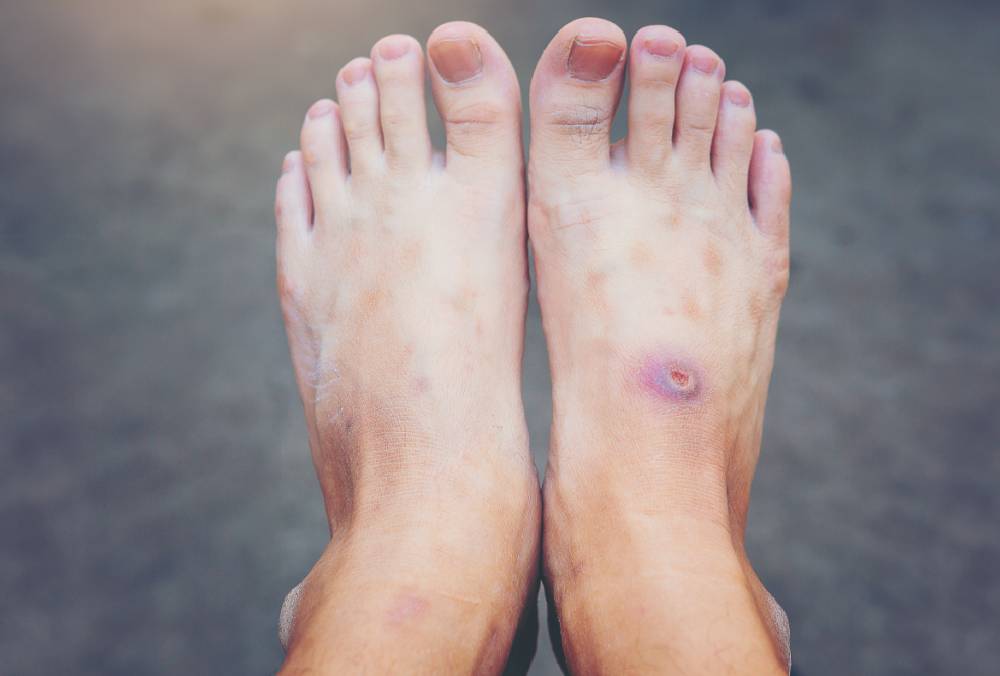Diabetic foot

What is a Diabetic Foot?
A diabetic foot refers to a variety of foot problems that occur in individuals with diabetes, primarily due to prolonged high blood sugar levels. These issues are often complex and can lead to severe complications if left untreated. Common problems associated with diabetic foot include nerve damage (neuropathy), reduced blood flow (ischemia), and an increased risk of infections, which can make even minor injuries more serious. Managing a diabetic foot is essential for preventing complications, maintaining mobility, and improving the overall quality of life.
Causes :
Diabetic foot problems are caused by a combination of factors related to long-term diabetes:
- Neuropathy (Nerve Damage): High blood sugar levels can damage nerves in the feet, leading to loss of sensation. This means that individuals may not feel pain or discomfort from injuries, sores, or pressure points, leading to untreated wounds that can worsen over time.
- Poor Circulation: Diabetes can lead to narrowing of the blood vessels, particularly in the lower extremities. Reduced blood flow means that oxygen and nutrients are not effectively delivered to the tissues, slowing down the healing process and increasing the risk of infection.
- Infection Susceptibility: People with diabetes often have a weakened immune system, making them more prone to infections. Foot ulcers, if not properly cared for, can become infected, potentially leading to severe complications, including gangrene and the need for amputation.
Symptoms :
Recognizing the symptoms of diabetic foot early is crucial to effective management and prevention of complications. Common symptoms include:
- Numbness or tingling sensations in the feet
- Burning or shooting pain, especially at night
- Swelling or redness in the foot area
- Wounds, cuts, or sores that do not heal quickly
- Foot ulcers or sores that discharge fluid or have a foul odor
- Noticeable changes in the color or temperature of the skin on the feet
The Approach to Diabetic Foot
Managing diabetic foot problems requires a comprehensive, proactive approach to care. Prevention is key, and it involves regular monitoring of blood glucose levels, practicing good foot hygiene, and wearing appropriate footwear to reduce injury risks. Regular foot exams by healthcare providers, especially for those with existing neuropathy or circulation problems, can help catch any issues early. Additionally, controlling other health factors, like blood pressure and cholesterol, is essential to maintaining circulation and preventing complications.
Our Process for Diabetic Foot Treatment
At our Hospital, we offer a thorough and personalized approach to diabetic foot care and treatment:
- Assessment & Diagnosis: We begin with a comprehensive assessment to understand the extent of any foot issues, checking for nerve damage, blood flow, and any visible wounds or deformities.
- Customized Treatment Plans: Based on the diagnosis, we develop an individualized treatment plan. This may include wound care, medication to treat infections, and management strategies to enhance blood circulation and reduce pain.
- Preventative Education & Counseling: We educate patients on effective ways to care for their feet at home, including the importance of daily foot checks, choosing the right footwear, and maintaining stable blood sugar levels.
- Regular Follow-ups & Monitoring: Our team schedules regular follow-up appointments to monitor healing, adjust treatments if necessary, and ensure the best outcomes for each patient.
